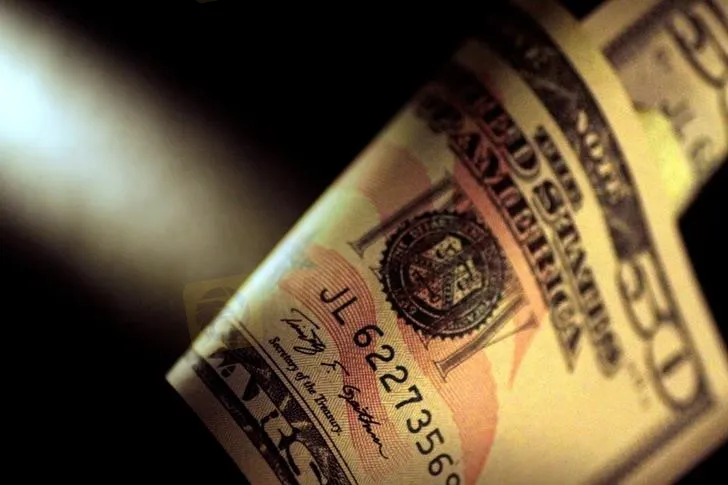简体中文
繁體中文
English
Pусский
日本語
ภาษาไทย
Tiếng Việt
Bahasa Indonesia
Español
हिन्दी
Filippiiniläinen
Français
Deutsch
Português
Türkçe
한국어
العربية
Dollar Up as Omicron Fears Die Down
Abstract:The dollar was up on Tuesday morning in Asia as concerns about the omicron COVID-19 variant started receding.

The dollar was up on Tuesday morning in Asia as concerns about the omicron COVID-19 variant started receding.
The U.S. Dollar Index Futures that tracks the greenback against a basket of other currencies inched down 0.09% to 96.245 by 12:12 AM ET (5:12 AM GMT).
The USD/JPY pair edged up 0.19% to 113.68.
The AUD/USD pair was up 0.37% to 0.7075, with the Reserve Bank of Australia keeping its interest rate unchanged at 0.10% earlier in the day. The NZD/USD pair edged up 0.19% to 0.6763.
The USD/CNY pair inched down 0.07% to 6.3712. Chinese data released earlier in the day showed that exports grew 22% year-on-year, and imports grew 31.7% year-on-year, in November. The trade balance was at $71.72 billion.
The GBP/USD pair edged up 0.15% to 1.3284.
“Although there is still a lot of uncertainty over Omicron's health and economic impact, investors have embraced news from South Africa suggesting the exponential rise in Omicron infections has not been followed by a big wave in hospitalizations,” NAB strategist Rodrigo Catril told Reuters.
Ntsakisi Maluleke, a public health specialist in South Africas Gauteng province, said over the weekend that patients with omicron had only shown mild symptoms.
Meanwhile, China eased its monetary policy by cutting banks' reserve requirements for the second time in 2021. The People‘s Bank of China will reduce most banks’ reserve requirement ratio by 0.5 percentage points next week, releasing CNY1.2 trillion ($188.16 billion) of liquidity.
The Reserve Bank of India will hand down its policy decision on Wednesday. The U.S. Federal Reserve, the European Central Bank, and the Bank of England will all hand down their policy decisions in the following week.
Although the Reserve Bank of New Zealand hiked its interest rate to 0.75% in November, some investors said that the move was bad for growth.
“It does seem like the market is fatigued with the New Zealand good news story, and is less willing to reward currencies heading for higher interest rates,” ANZ Bank analysts said in a note.
“They normally signal strong growth, but in a supply-constrained world, higher rates may be a signal of slower growth to come. New Zealand's top of the pile cash rate, and expectations of more interest rate hikes to come, certainly aren't helping the New Zealand dollar.”
Disclaimer:
The views in this article only represent the author's personal views, and do not constitute investment advice on this platform. This platform does not guarantee the accuracy, completeness and timeliness of the information in the article, and will not be liable for any loss caused by the use of or reliance on the information in the article.
Read more

Dovish FOMC Meeting Minutes Hammers Dollar
The dollar continued to face downside pressure following the release of the FOMC meeting minutes. Concerns were raised by FOMC members over potential labour market deterioration, with the majority of the members signalling that a September rate cut might be appropriate. This dovish narrative provided buoyancy to the equity market, as all major U.S. indexes gained in the last session.

Wall Street Advances Ahead of CPI
The equity markets continued their upward momentum, driven by the easing of the Japanese Yen's strength. The Yen was pressured by a dovish tone from Japanese authorities, signalling that the Bank of Japan (BoJ) might keep its monetary policy unchanged amid rising global economic uncertainties.

Nasdaq Bullish, Encourage by Upbeat U.S. Job Data
The financial markets reacted positively to the upbeat Initial Jobless Claims data released yesterday, which came in at 233k, lower than market expectations. This eased concerns about a weakening labour market and the heightened recession risks that emerged after last Friday's disappointing NFP report. Wall Street benefited from the improved risk appetite, with the Nasdaq leading gains, surging by over 400 points in the last session.

Dovish Fed’s Statement Hammers Dollar
The highly anticipated Fed’s interest rate decision was disclosed yesterday, hammering the dollar’s strength lower as Fed Chief Jerome Powell explicitly signalled that a September rate cut is possible. The U.S. central bank is balancing both inflation and recession risks, with interest rates adjusted to curb inflation while maintaining a solid labour market.
WikiFX Broker
Latest News
Saxo & Portuguese Bank Partnership
SEC Fines Broker-Dealers $275K for Incomplete SAR Filings
Elon Musk Warns of Imminent US Bankruptcy | Bitcoin Retreats from $100K
WikiEXPO Global Expert Interview: Advanced Practices and Insights in Financial Regulation
Justin Sun Invests $30M in Trump-Backed World Liberty Financial
Kraken Closes NFT Marketplace Amid New Product Focus
Robinhood Launches Ethereum Staking with 100% Rewards Match
Lured by False Promises: Malaysian Driver Lost RM218K to an Investment Scam
FTX Sets March 2025 Timeline for Creditor Payouts: What It Means for Investors
What is an Economic Calendar? How it works
Currency Calculator



